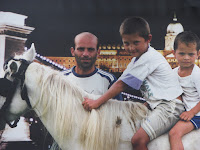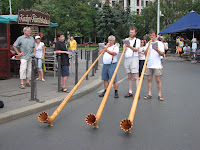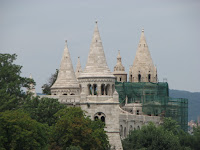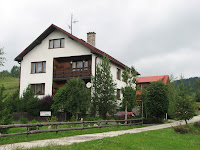
Belgrade and Serbia have had along history of invasion. Starting with the Illyans, then Celts, Romans, Slavs, Turks, Austro - Hungarians and Germans briefly in WW 2.
These are the names Belgrade has been known by over this period.

The main feature of the city is Kalemegdan Citadel, a fortress on a hill high above the confluence of the Danube and Sava rivers. It has guarded the rivers, vital for the military and for commerce. Over 115 battles have been fought over the citadel, and the city below and parts of the fortress have been razed 40 times.

The main square in the city is Trg Republike with a statue of the liberator of Serbs from Turkish rule on his horse. From here Kneza Mihailova, a pedestrian street goes uphill to the citadel. Plenty of pasta, pizza and ice cream along here!



Tried the local Serbian food with the help of Aussies Kent and Al. We went for the bean and sausage dish which provided plenty of gas the next day - real cowboy food. Washed it down with the local beer.


Belgrade was bombed by the US and NATO forces for 78 days in 1999 over Serbian indiscretions in Kosovo and neighbouring countries. The targets were mainly military ones including Army HQ. A few of these buildings still haven't been rebuilt. Added to Nazi bombing in WW2 and post war central planning, the city is rather drab and hard edged. Serbia and Belgrade have not yet come within the comfort zone of most tourists.


We are living history here in Belgrade. The Bosnian Serb leader Radovan Karadzic was arrested for war crimes in the city last night. He has been on the run from the authorities and War Crimes Tribunal for over ten years. At breakfast we could hear shouting and chanting out in the streets and it was his supporters protesting his arrest - they were just around the corner in Trg Republike. Police in riot gear have been around the streets all day keeping an eye on the protesters. We didn't think it was a good idea to photograph them!













































